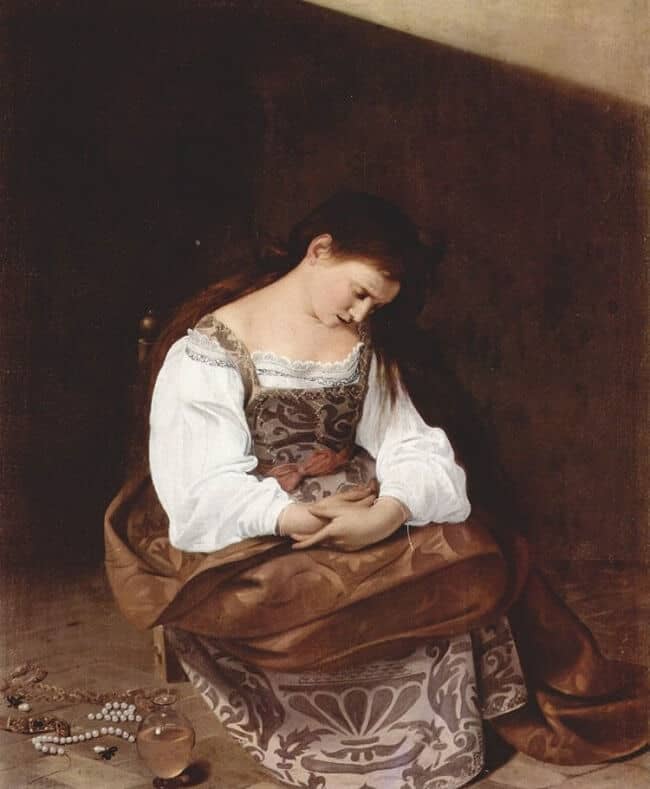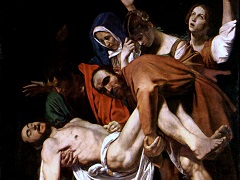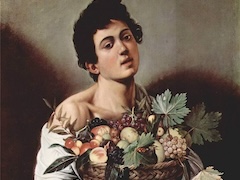Penitent Mary Magdalene, 1597 by Caravaggio

Penitent Mary Magdalene is different from Caravaggio's other youthful works in its suppression of most highlights, particularly on the flesh and the drapery. Past restoration may have reduced the highlights somewhat, but
the general effect is of an intentional utilization of softer light, modified by atmosphere. The diffusion of light is particularly evident in the obscurity of the background line separating the planes of the floor and the wall,
the first known instance of Caravaggio's defining the volumes of a room so completely.
The painting's religious import is reinforced, rather than compromised, by the contrast between its charm as genre and its spiritual meaning. Mary's rejection of the sensual world for the world of the spirit and her hope of redemption
through the forgiveness of sin are made compelling by her representation as an ordinary woman rather than as sanctified. Because she is recognizably human, a remorseful sinner, her experience becomes accessible to other humans. Thus
what Bellori saw as frivolous secularly is instead an effective, if deceptive, means of developing universal human appeal. From this point of view, the painting is characteristic of the Counter-Reformation, conveying a basic Christian
message through appeal to the senses.
It is close to the Rest on the Flight to Egypt; the model (who has literally let her hair down) is probably the same as that for the Virgin: her pose is similar, as is the motif of
the drapery across her knees trailing off to the right. And her humility is hardly less. Perhaps the picture was a rehearsal for the larger and more ambitious Rest. But the exceptional quality of the light might suggest that it was
experimental. The Magdalene's isolated self-containment, reminiscent of North Italian prototypes, and her loneliness are intensely expressive, particularly in contrast to the gay life she has just left. Whether before,
contemporaneous with, or after the Rest, the picture is self-sufficient.
















